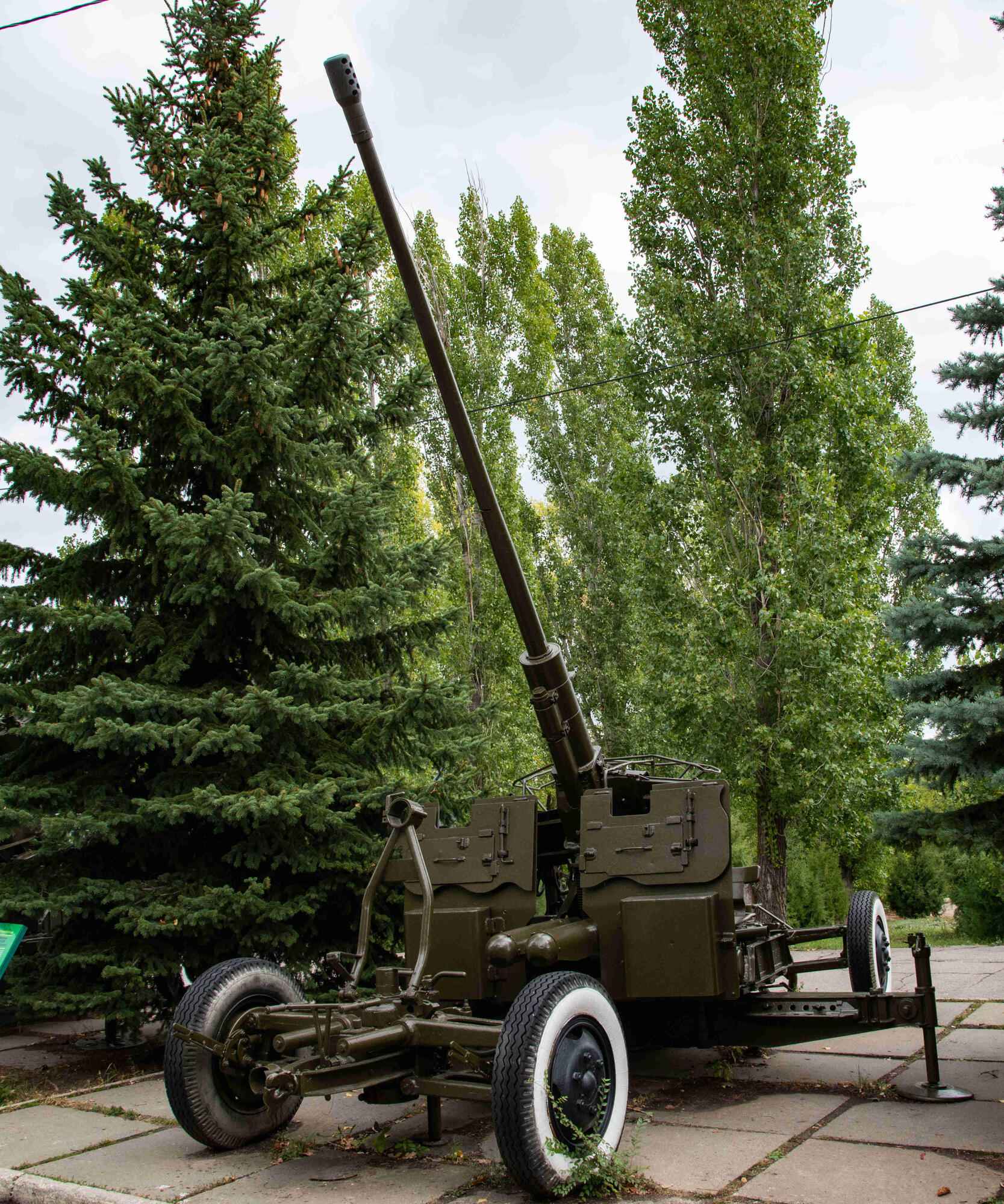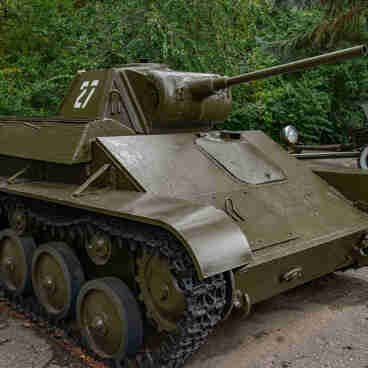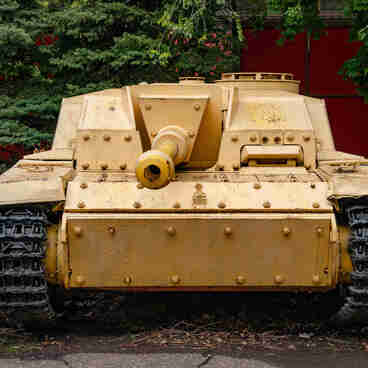The 61-K 37mm automatic air defense gun was developed in the design bureau of the Kalinin Machine-Building Plant. The project was led by Mikhail Nikolayevich Loginov. The gun entered service in 1939.
The Soviet designer Mikhail Loginov failed to realize all his plans and theoretical designs: he fell ill with tuberculosis and died in 1940 in Crimea, where he had been sent for treatment. Mikhail Loginov was buried on the southern coast of the Crimean Peninsula, in Livadia. In 2020, his ashes were reburied in Mytishchi (Moscow Oblast).
The automatic air defense gun model 1939 was a single-barrel small-caliber gun mounted on a built-in four-wheeled carriage with twin outriggers. Design-wise, the 61-K consisted of a submachine gun, an automatic anti-aircraft sight, a mount with vertical and horizontal aiming mechanisms, a balance mechanism, a gun shield, and a carriage.
The breech block opened during recoil, and locked after returning to battery and ramming the next cartridge. The automatic loading mechanism was intended for continuous feeding of cartridges into the chamber and consisted of a magazine and a rammer.
Five-round metal clips were fed into the gun manually from above, and a new clip could be fed before the previous one was used up. This feature provided the possibility of continuous fire. The gun’s automated mechanisms provided a consistent rate of fire of 180 rounds per minute.
A flash guard was mounted on the quick-change barrel. It was intended to protect the gunners from becoming blinded when firing. The breech loader was screwed onto the barrel casing. The falling block mechanism opened manually with a handle. The hydro-spring recoil system was attached from below to the neck of the cradle. The gun was aimed at the target by using lifting and turning mechanisms with manual drives.
The gun was designed to fire at air targets that were within 4 km and at an altitude of up to 3 km, and could be used to strengthen anti-tank defense. A series of naval anti-aircraft guns was developed on the basis of the 61-K weapon.
The Soviet designer Mikhail Loginov failed to realize all his plans and theoretical designs: he fell ill with tuberculosis and died in 1940 in Crimea, where he had been sent for treatment. Mikhail Loginov was buried on the southern coast of the Crimean Peninsula, in Livadia. In 2020, his ashes were reburied in Mytishchi (Moscow Oblast).
The automatic air defense gun model 1939 was a single-barrel small-caliber gun mounted on a built-in four-wheeled carriage with twin outriggers. Design-wise, the 61-K consisted of a submachine gun, an automatic anti-aircraft sight, a mount with vertical and horizontal aiming mechanisms, a balance mechanism, a gun shield, and a carriage.
The breech block opened during recoil, and locked after returning to battery and ramming the next cartridge. The automatic loading mechanism was intended for continuous feeding of cartridges into the chamber and consisted of a magazine and a rammer.
Five-round metal clips were fed into the gun manually from above, and a new clip could be fed before the previous one was used up. This feature provided the possibility of continuous fire. The gun’s automated mechanisms provided a consistent rate of fire of 180 rounds per minute.
A flash guard was mounted on the quick-change barrel. It was intended to protect the gunners from becoming blinded when firing. The breech loader was screwed onto the barrel casing. The falling block mechanism opened manually with a handle. The hydro-spring recoil system was attached from below to the neck of the cradle. The gun was aimed at the target by using lifting and turning mechanisms with manual drives.
The gun was designed to fire at air targets that were within 4 km and at an altitude of up to 3 km, and could be used to strengthen anti-tank defense. A series of naval anti-aircraft guns was developed on the basis of the 61-K weapon.


